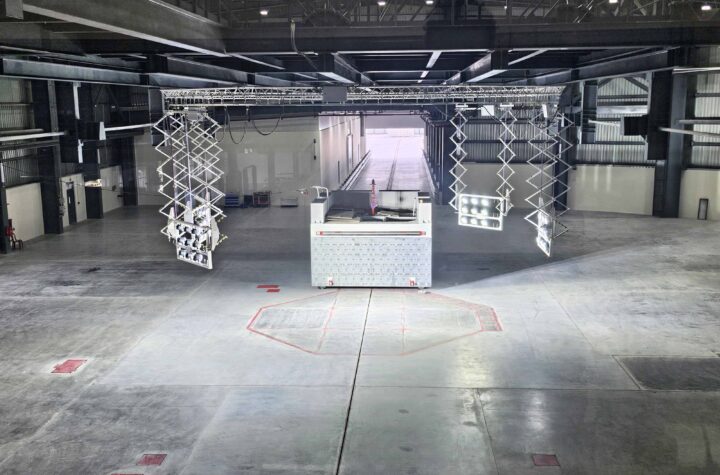
 If you listen to the purr of a Nissan Titan truck or a Mercedes-Benz E-class, you probably figure the exhaust system has something to do with it. And you are right, but a big part of the secret is in the absorptive continuous glass roving filler in the muffler.
If you listen to the purr of a Nissan Titan truck or a Mercedes-Benz E-class, you probably figure the exhaust system has something to do with it. And you are right, but a big part of the secret is in the absorptive continuous glass roving filler in the muffler.
The material is called Advantex glass, produced by Owens Corning (OC), and it is part of a system approach known as Silentex Noise Control System. This is a completely integrated system using the high temperature glass fiber material, tailor made muffler filling machinery and a cost effective filling process.
Silentex system glass replaces basalt wool or E-glass fillers and offers superior mechanical properties and more resistance to corrosive environments as well. OC is conducting a worldwide conversion of its product lines to the Advantex glass fiber platform.
We visited with Howard Hiers, North American business manager for OC Automotive to learn more about the Silentex system. “Mufflers are transitioning rapidly from reflective designs to absorptive designs,” he says. “It’s all about sound quality and system tunability to achieve the right audible tones. “Professor Ahmet Selamet at Ohio State University’s Center for Automotive Research has been heavily involved in helping us get a handle on optimizing flow path modeling, specifically for absorptive systems, so we can alter the packaging, density and geometry to produce the desired result. What’s needed is a system that can be tuned over a wide range of frequency, say from 50 to 3,000 Hz. In the past two years we have taken this technology to a higher level.”
“Professor Ahmet Selamet at Ohio State University’s Center for Automotive Research has been heavily involved in helping us get a handle on optimizing flow path modeling, specifically for absorptive systems, so we can alter the packaging, density and geometry to produce the desired result. What’s needed is a system that can be tuned over a wide range of frequency, say from 50 to 3,000 Hz. In the past two years we have taken this technology to a higher level.”
According to Hiers, the Silentex Noise Control System provides improved durability and acoustic performance and, properly applied, can also cut overall system cost. Exhaust systems these days face more demanding acoustic requirements, higher engine temperatures and there is increased pressure for lower weight and smaller system volume. Reduced back pressure is yet another objective, notes Hiers.
Introduced globally back in the early ’90’s, the use of the Silentex system has taken off more in Europe and Japan than in NAFTA. He estimates that 60 percent of European and Japanese exhaust systems are of the absorptive type, while only 10 percent of them are in NAFTA. However, Owens Corning sees 2004 as a tipping point year for absorptive mufflers in North America, and the Nissan Titan is the newest convert of many to the Silentex system.
The Silentex system glass is texturized from a single strand into 4,000 filaments with practically no damage insuring that each muffler is filled with continuous fibers. Texturizing separates the strand into individual filaments. These individual filaments are what provide the sound attenuation. If the fibers are not properly separated, the ability of the fiberglass strand to attenuate sound is greatly reduced. Fiber is injected into the muffler cavity with a clean automated process that insures high accuracy and also low waste. Extremely tight tolerances and uniform distribution means using less material than with other fillers.
Fiber is injected into the muffler cavity with a clean automated process that insures high accuracy and also low waste. Extremely tight tolerances and uniform distribution means using less material than with other fillers.
The annealing point (736 degrees C) and softening point (916 degrees C) of Silentex glass are far higher than standard E-glass and so it is able to withstand higher exhaust temperatures and no stainless steel wool is needed to protect it. The higher annealing point also means that the fibers will retain their strength better than standard E-glass at higher temperatures so the fibers will remain continuous and resist blowout in the exhaust. Young’s modulus for the material at room temperature is 76.6 GPa. Silentex glass also has far superior corrosion resistance.
“The material is very durable,” Hiers told us, “and there is only very minor degradation in performance after years of service. Its superior ability to block heat flow also means you can often eliminate the need for a heat shield.”
Some 20 million mufflers have been produced using the Silentex sound dampening system in 2003 and if the cascading switch to absorptive muffler designs continues, there will surely be many more to come.









More Stories
Essential Features to Look for in ADAS Calibration Systems
Your Guide to Filing a Car Accident Claim
Steps to Take Immediately After a Car Accident